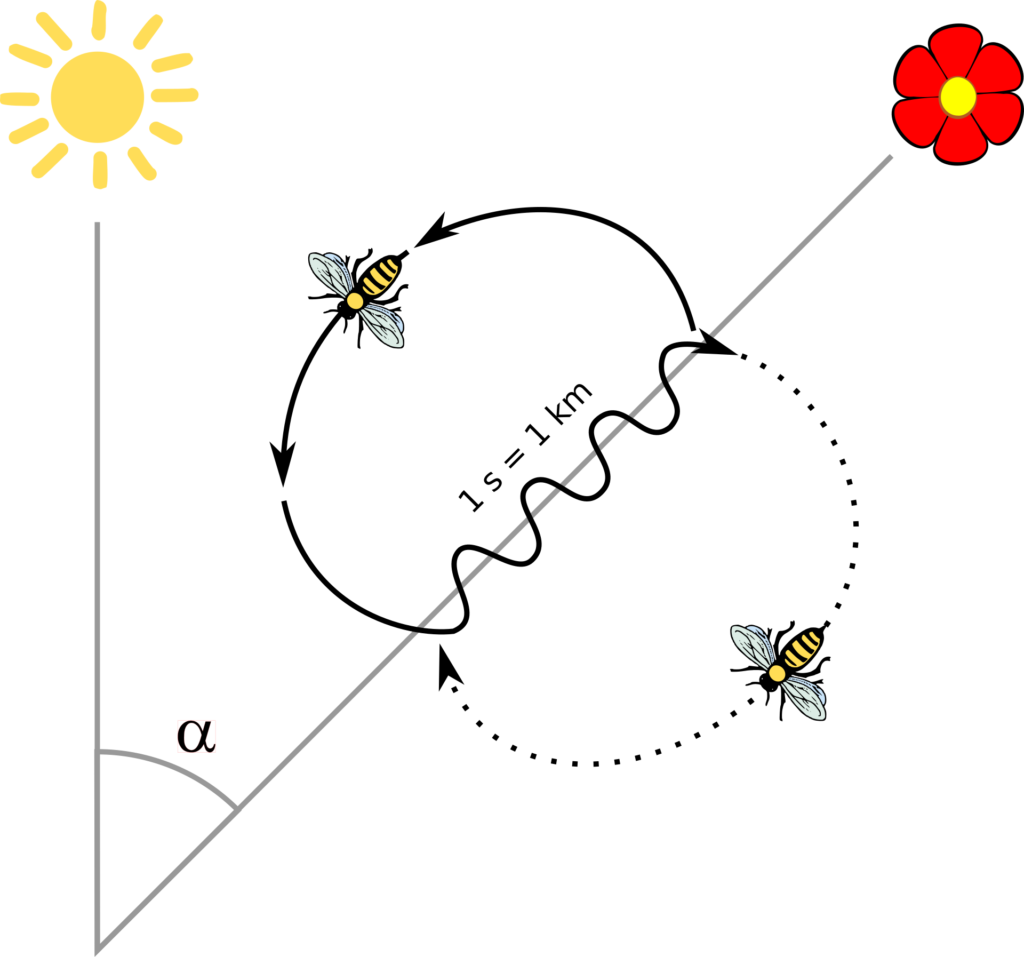MONDAY, 17 FEBRUARY 2020
Come spring, swarms of honeybees rise into the air and begin the arduous search for new hives. This behaviour, termed “swarming”, occurs when a single colony splits into two or more colonies, each with a young queen in their midst. The swarming bees depart from their original hive and settle at temporary locations, forming clusters on anything from branches to bicycle baskets. From here, scouts are sent out to select a site for the new hive.While each scout visits only one potential location, and the majority of waiting bees do not visit any site at all, enough information is collectively amassed by the hive to make a unanimous decision. The complex mechanisms underlying such a “hive mind” decision-making process have been extensively studied:

Remarkably, each scout also assesses the quality of the prospective site and adjusts the duration of the waggle dance: the higher-quality the site, the longer the dance. Despite only visiting one site, each bee is able to make an objective assessment of hive quality, suggesting an innate ability to discriminate between “good sites” and “bad sites”. Prior studies have found that bees evaluate each site with respect to at least 6 different attributes, each of which have different weightings1 – for example, cavity volume and entrance height. After interpreting the dance, other scouts may choose to visit the specified site and dance for it, so the number of waggle-dancers for a favourable location increases.
Seeley & Buhrman (1999) observed a high drop-out rate for dancing among scouts and a very low rate of allegiance-switching to other sites2. In other words, bees that initially dance for a site that isn’t chosen by the rest of the hive usually cease their dancing, rather than switching their dance to “advertise” the chosen site. It is now known that honeybees employ a “headbutt” as their stop signal for waggle-dancing to indicate they do not support the dancer's chosen site3. However, the dancer does not immediately stop when headbutted; instead, an accumulation of stop signals makes it more likely that she will cease dancing.
Parallels can be drawn between decision-making processes demonstrated by swarm intelligence (SI) and our own brain. In a hive, each bee is comparable to a single neuron – limited in capability; but the sum of the whole is greater than its parts. In both cases, activating or inhibitory signals accumulate, and an action takes place when a critical threshold is passed. Eventually, all remaining dancers will be advertising one site – the prime location for a new hive. Having reached unanimity, there is a crescendo of dancing, right before the swarm takes off and flies in the direction of their new hive site. Home sweet home.
Ellery Gopaoco is a 1st year student of Natural Sciences at St. John's College and the Biomedical Subject Editor of BlueSci magazine.
1Seeley, T.D. (1985) Honeybee ecology. Princeton University Press, Princeton.
2Seeley, T. D., Visscher, P. K., Schlegel, T., Hogan, P. M., Franks, N. R., & Marshall, J. A. R. (2011). Stop Signals Provide Cross Inhibition in Collective Decision-Making by Honeybee Swarms. Science, 335(6064), 108–111. doi: 10.1126/science.121036
3Seeley T.D. & Buhrman S.C. (1999). Group decision making in swarms of honey bees. Behavioral Ecology and Sociobioly, 45(1), 19-31. doi 10.1007/s002650050536
